- Home
- Firewood Types
- Walnut Firewood
Walnut Firewood
This post may contain affiliate links so I earn a commission.
Walnut firewood is not commonly harvested due to the tree's valuable lumber.
Most of the wood from the walnut tree is processed into fine furniture, making it one of the most valuable trees per board foot.
Walnut is a hardwood tree commonly known for its unique and sweet nuts.
However, that is not all it is known for.
Its wood can also be used as firewood.
Walnut trees are about 33 to 131 feet high, but that depends on the species.
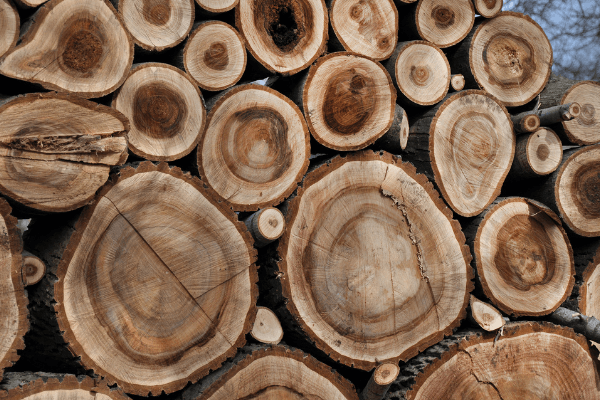
Their leaves look like feathers, and the leaf axis, reflect on each other.
They have different barks depending on the type and species.
Their nutshells can only get noticed or revealed when the fruits are ripe.
If you need wood that burns very hot and dries out quickly, walnut firewood is your best option.
Types Of Walnut Trees
There are 20 different kinds of walnut trees, but only three types are commonly grown and harvested in the United States.
The three most common species are:
- Black walnut
- Butternut/White walnut
- English walnut
Let’s look at each tree in a little more detail.
Then, you can decide whether or not you want to cut your walnut tree and use it for firewood.
Black Walnut Tree
The black walnut is a common ordinary old-growth tree, but it has become rather scarce due to its desirable lumber.
The main use of the tree is for high-quality woodworking due to its beautiful wood grain.
The nuts from the tree are often difficult to process, making it primarily a tree grown for lumber.
Black walnut trees do not like shade.
They can be found in sunny open areas with well-drained, moist, rich, and dark soil.
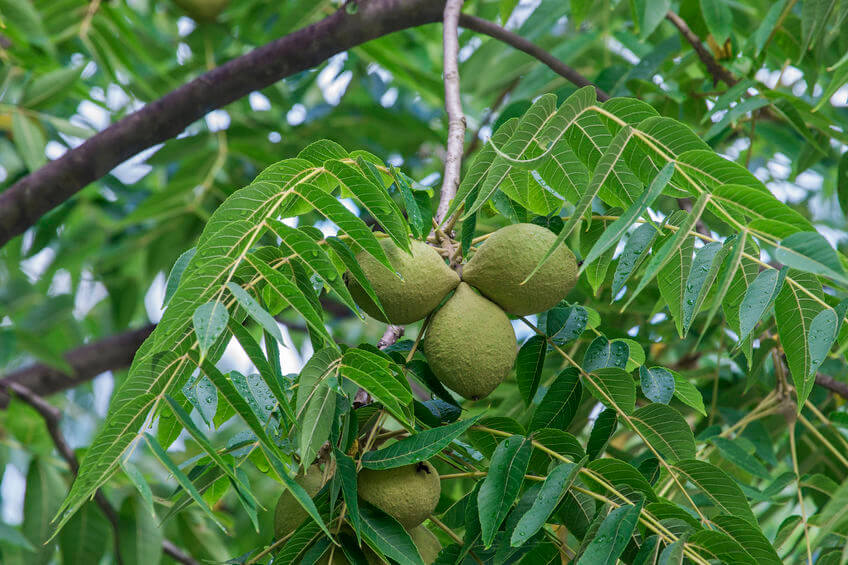 Black Walnut
Black WalnutThe tree can grow up to 150 feet high and can live for more than 200 years.
The tree produces a substance that is toxic to other plants called juglone.
This toxic substance helps the tree keep other vegetation from competing for moisture and other valuable nutrients.
Its nuts are pretty hard to open, and you might get your hands or palms stained when trying to unseal them.
Butternut/White Walnut Tree
The butternut (also called the white walnut) grows rapidly in well-drained soils.
The tree grows on hillsides or stream banks.
They are a small to medium-sized tree that is short-lived.
Most butternut trees seldom reach the age of 75.
The butternut is valuable for its nuts and lumber.
The wood is much softer than the black walnut and is very rot-resistant.
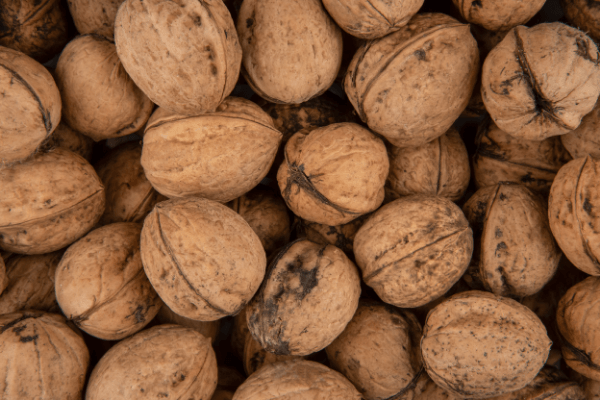
The soft, coarse-grained wood stains and finishes nicely, making it a popular choice for woodworking.
Both people and animals enjoy the nuts from the tree.
The nuts are commonly used in baking and are a great source of omega-3 fatty acids.
English Walnut
The English walnut (also known as the Persian walnut) is native to Iran.
The tree came to America with the English.
It is widely grown in California for its nuts, which are easier to process than nuts from the black walnut.
The nuts from the English walnut are an excellent source of nutrition and are also used for medicines and dye.
The English walnut grows rapidly and can reach 40 to 60 feet tall and lives for about 60 years.
Walnut Firewood Usage
Black walnut produces 22.2 million BTUs per cord.
The primary use of a sizeable urban walnut tree is for firewood due to its poor lumber quality.
The urban grown tree is usually a short tree with numerous branches resulting in inferior quality lumber.
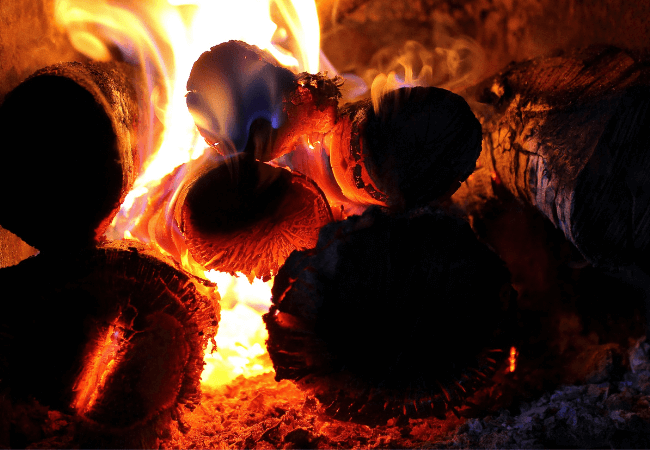
Urban trees are commonly cut into firewood, and a single tree can contain one or more cords of walnut firewood.
Walnut firewood is excellent firewood with medium density and is relatively easy to burn.
It's good quality firewood that burns clean, is easy to start, and has a pleasant aroma.
The BTU value is not as high as other hardwoods, such as oak, but is much better than softwood, such as pine or fir.
Is Walnut Good Firewood?
Finding good firewood is quite difficult.
Some burn well but have a terrible smell, while others take a really long time to dry.
With walnut, you need not worry.
It burns quickly, and it does not produce too much smoke.
Walnut trees have a medium density, and they smell really lovely.
However, their BTU rating is relatively low compared to other hardwoods.
In comparison to fir, pine, and other softwood trees, though, its BTU is much higher, making it perfect for firewood even though not as good as other hardwoods.
To determine if a tree is suitable for firewood, you need to know and check how easy it is to split.
In most cases, the difficulty in splitting depends on the moisture content.
If the wood is wet, you may have a tough time splitting it.
Splitting is not difficult or time-consuming for walnut firewood as long as you let the wood dry completely.
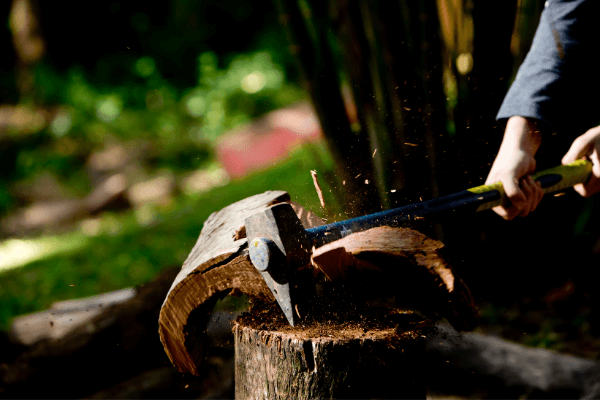
You can split it using a splitting axe or simply use an electric splitter.
Nevertheless, splitting walnut firewood is easier compared to splitting other hardwood trees.
Remember that you need to be patient when splitting the wood and always start by splitting the wood outside before moving to the middle part.
Also, walnut firewood is clean, and it burns quickly as long as it has been seasoned for at least one or two years.
It produces less smoke compared to other wood types.
However, the green walnut can create clouds of dense smoke, and they should therefore never be burned in large amounts or inside the house.
Seasoning Walnut Firewood
Generally, walnut firewood requires a minimum of six months and a maximum of two years to dry out completely.
Some take even more than two years, depending on the moisture content.
In conclusion, walnut firewood is really good firewood since it burns quickly and has a delightful aroma.
It may not be the best out there, but it works perfectly as long as you have a good supply.
Therefore, if you require good firewood, you should consider buying or investing in walnut firewood.

About the Author
Obsessed with firewood, Nick is behind over 350+ of Firewood For Life's articles, as well as countless reviews, guides and YouTube videos to help readers like you reduce heating costs and create the perfect fire.


